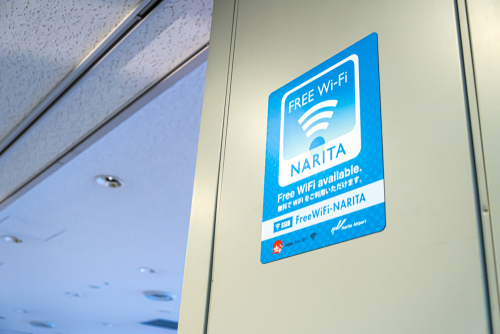Local 5G and TETRA interconnected at Narita International Airport
- Like
- Digg
- Del
- Tumblr
- VKontakte
- Buffer
- Love This
- Odnoklassniki
- Meneame
- Blogger
- Amazon
- Yahoo Mail
- Gmail
- AOL
- Newsvine
- HackerNews
- Evernote
- MySpace
- Mail.ru
- Viadeo
- Line
- Comments
- Yummly
- SMS
- Viber
- Telegram
- Subscribe
- Skype
- Facebook Messenger
- Kakao
- LiveJournal
- Yammer
- Edgar
- Fintel
- Mix
- Instapaper
- Copy Link
Posted: 19 May 2023 | International Airport Review | No comments yet
Telecommunication companies have successfully interconnected NTT East’s “Giga-Raku 5G”, with TETRA, the airport’s wireless infrastructure.


Telecommunication companies have partnered to improve operational efficiency at Narita International Airport.
In what is considered a breakthrough for Narita International Airport, telecommunication companies Nippon Telegraph and Telephone East, NTT East corporation and Nippon Airport Radio Services Co., Ltd., NAR, have successfully interconnected NTT East’s “Giga-Raku 5G”, with TETRA, the airport’s wireless communication infrastructure.
As a result, it realised a breakthrough integrated voice communication environment in the airport ramp area between Local 5G enabled devices, equipped with Mission Critical Push to Talk. Hereinafter, it has bee called MCPTT, application, and TETRA devices. NTT East and NAR will continue to MCPTT and develop cases by making concrete proposals to expand the scope of Local 5G applications. They will upgrade the wireless communication environment for actual operations at airports, factories or warehouses, and other facilities with extensive areas.
1. Background
Last couple of years, Local 5G is being considered in a variety of industrial fields in Japan. At Narita International Airport, a consortium including NTT East and NAR are studying the use of Local 5G as a stable and secure wireless communication infrastructure to realise the “Smart Airport”. This includes the implementation of multiple autonomous driving bus(*2) in the airport ramp area.
On the other hand, TETRA is used in more than 80 airports globally and is serviced in five major airports including Narita International Airport in Japan as a ground-to-ground wireless communication infrastructure.
It is used not only for daily operations such as ground handling and ramp control, etc. but also for mission critical communication in the case of emergency. In order to smoothly deploy the Local 5G in airports, it’s essential to connect with airport radio systems and the realisation of interoperability between the two systems must be an important step.
Some airport workers have been required to carry multiple communication devices in the past. The interconnection will enable operators to use only a smartphone in the Local 5G area, and in the future, users can take advantage of MCPTT applications.
2. System Overview
NAR operates TETRA and the MCPTT system “WAVE”, developed by Motorola Solutions. The WAVE has been integrated with TETRA and the interconnection between Local 5G and TETRA has been made using the WAVE.
It enables voice calls and text messaging through WAVE applications installed on smartphones via cellular network and Local 5G. By using WAVE as a communication application on Local 5G environment, built with “Giga-Raku 5G” at Narita International Airport, voice calls can be made between Local 5G-enabled smartphones and TETRA terminals, as well as between such smartphones over a closed Local 5G network.
3. Future Prospects
The WAVE and TETRA has been used as a communication tool when experimental staff tested the multiple autonomous driving bus – experiencing high-quality and stable communication functionality. Both systems consist of dedicated radio waves and closed networks, and are not affected by failures or congestion of cellular networks, etc.
Therefore, high availability can be expected in emergency situations such as disasters. NAR will continue to collaborate with NTT East to help introduce Local 5G at airports, and propose “digital transformation.” NAR will take advantage of WAVE’s diverse functions and interconnection with TETRA. NTT East will also propose WAVE as a communication tool for “Giga-Raku 5G” to corporate factories and warehouses, etc.
(*1) Local 5G refers to licensed 5G communication networks for buildings or premises, differing from nationwide networks operated by mobile phone service providers. Various local entities such as enterprises and governments can flexibly develop Local 5G networks within respective compounds to meet local or industrial needs.
(*2) The implementation is being held on the bout of the airport ramp area by MLIT. This implementation is also based on developing Local 5G by MIC.
Related topics
Communication Technology, Contactless / Touchless technology, Digital transformation, Information technology (IT), Operational efficiency
Related airports
Related organisations
Ltd., Motorola Solutions, NAR, Nippon Airport Radio Services Co., Nippon Telegraph, NTT East corporation, Telephone East, TETRA


















